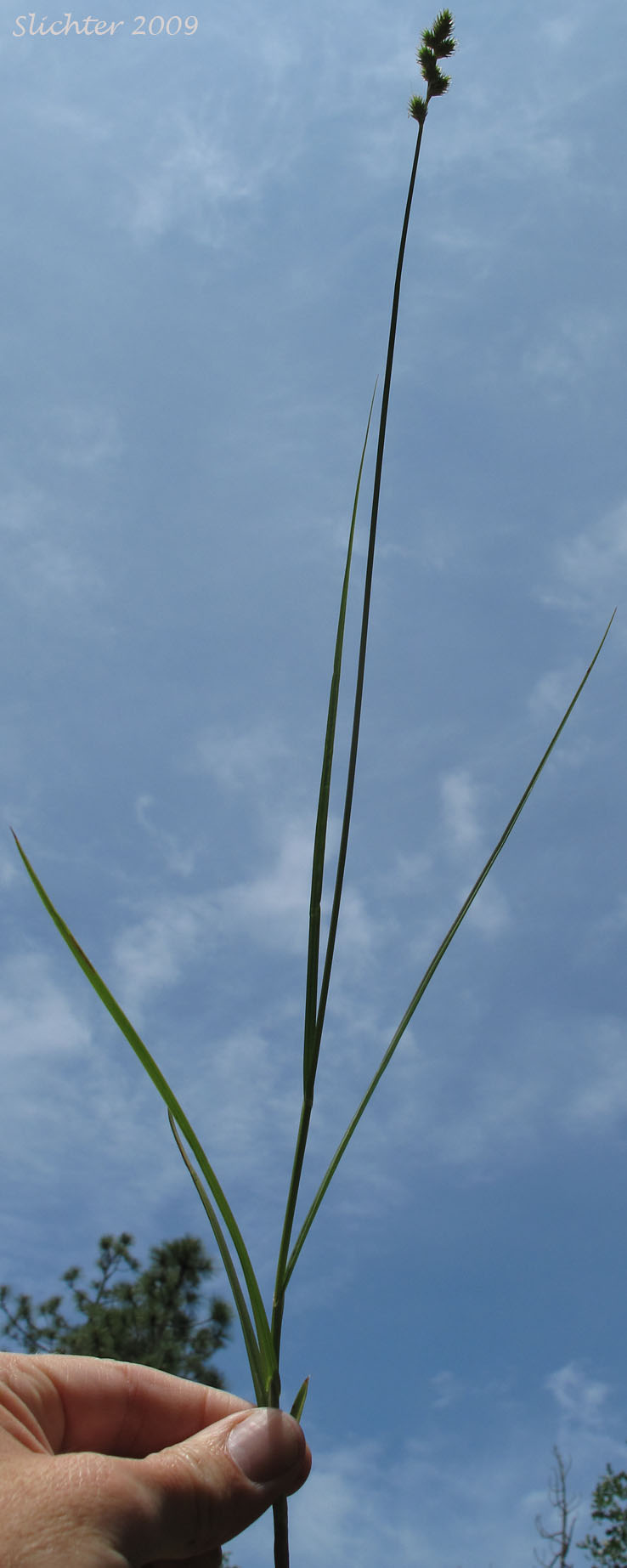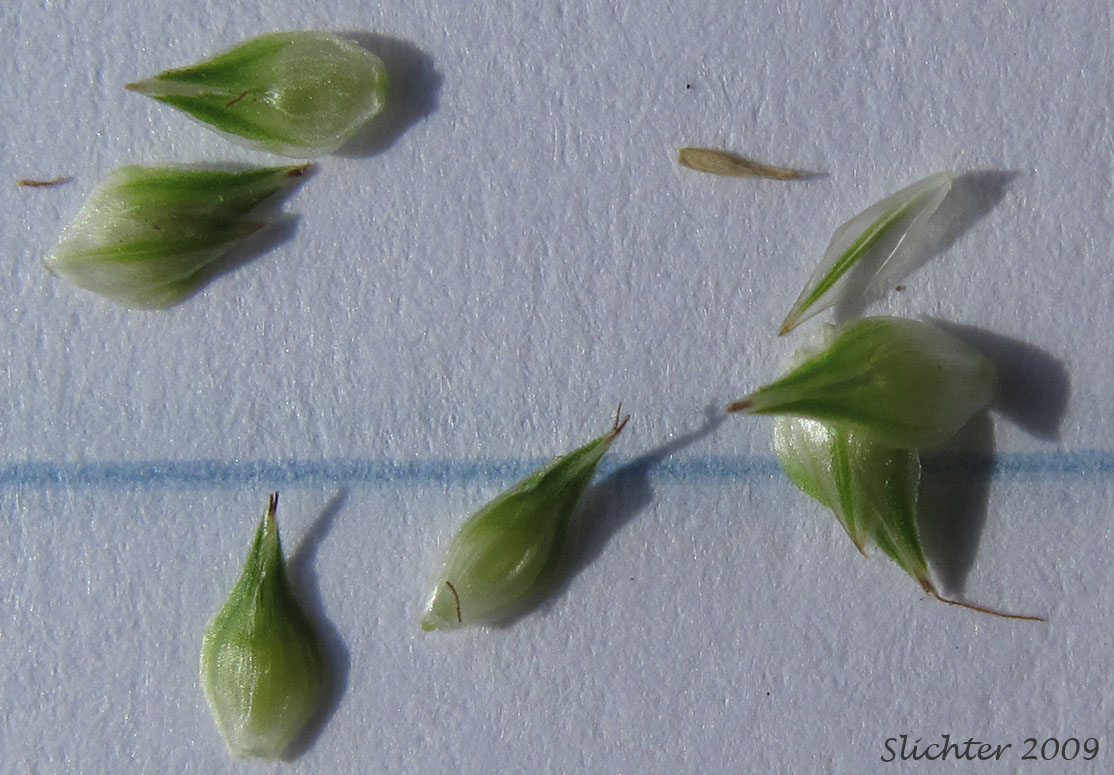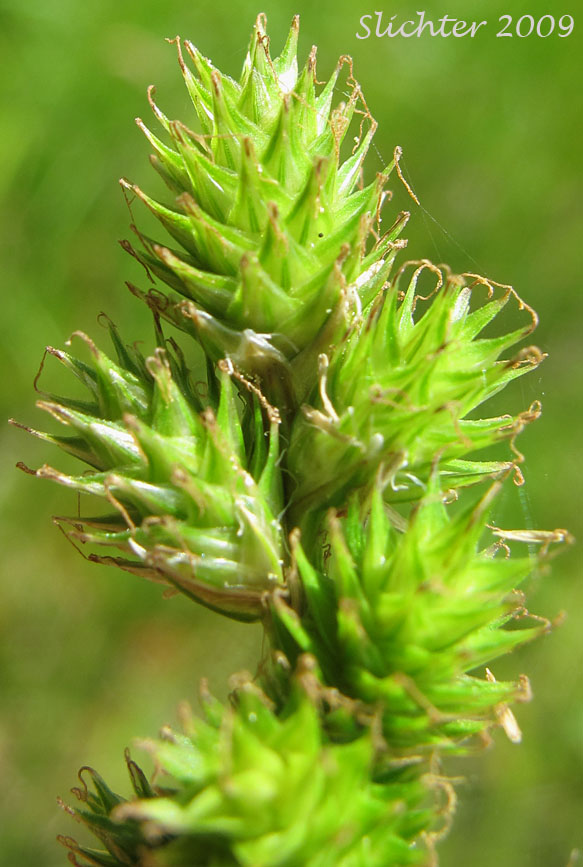Fragile Sheathed Sedge, Fragile-sheathed Sedge
Carex fracta

Close-up of the inflorescence of what appears to be fragile-sheathed sedge. Note that the individual spikes tend to overlap one another, with perhaps the exception of the lowest spike. Two stigmas are present on each perigynia. Photographed at the stock pond at the Dalles Mountain Ranch, Columbia Hills State Park, WA.........June 3, 2009.

Close-up of the hyaline (nearly clear) leaf sheath of what appears to be fragile-sheathed sedge. The hyaline sheath is longer than a centimeter and has a rounded tip, suggesting this species. Photographed at the stock pond at the Dalles Mountain Ranch, Columbia Hills State Park, WA........June 3, 2009.

Close-up of the inforescence of what appears to be fragile-sheathed sedge. Photographed at the stock pond at the Dalles Mountain Ranch, Columbia Hills State Park, WA..........June 3, 2009.

Fragile-sheathed sedge as seen in wetlands at the trailhead for Canyon Creek in the Klickitat State Wildlife Area of south-central Washington.........June 12, 2009.
 --
--  --
--  -
- 
Close-up views of fragile-sheathed sedge as seen in wetlands at the trailhead for Canyon Creek in the Klickitat State Wildlife Area of south-central Washington.......June 12, 2009. The photo at left shows a close-up of the leaf sheath front which is hyaline (clear) and extends 3-9 mm above the junction with the leaf blade. The second photo from left shows a close-up of the perigynia and bracts. The two photos at right show close-ups of the inflorescence with the lowest spikes more widely separated while the upper spikes are much closer spaced. It can also be determined that each perigynia has two stigmas at its tip.
Paul Slichter
